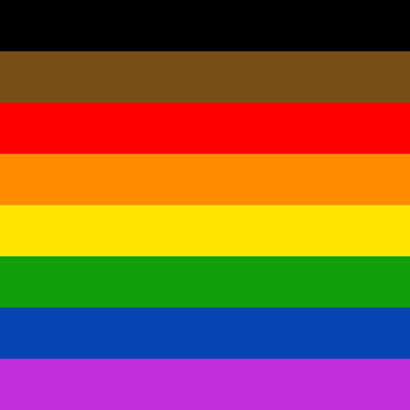
June marks the annual celebration of Pride Month. As a member of the LGBTQ+ community, I look forward to Pride Month every year. It is a valuable time for our community and for all people to recognize the impact and contributions of LGBTQ+ people across the world and to continue to acknowledge the adversity and challenges that impact the LGBTQ+ community today. This year though, things feel different.
When we reflect on the history of the LGBTQ+ rights movement, we bear in mind that just a few decades ago people who identified as LGBTQ+ were often discriminated against by the government, religious institutions, employers, family members, and, by the police. In many spaces, LGBTQ+ people were thought of as “less than” – often arrested, evicted, fired, or in some cases, sent to prison, mental institutions or conversion centers.
Things began to change just over 50 years ago on June 28, 1969, when police raided Stonewall Inn, a gay night club in New York City. This event, which became known as the Stonewall Riots, was a tipping point for LGBTQ+ rights in the United States when people stood up and said, “no more.” It was regarded by many as the first major protest on behalf of LGBTQ+ equality in America, and it was largely led by LGBTQ+ people of color. The riots not only sparked the annual acknowledgment and celebration of LGBTQ+ Pride Month in communities across the county every June, but they paved the way for future generations of people who identify as LGBTQ+ to be able to live their lives without fear or consternation.
This June, we again find ourselves in a situation similar to Stonewall. We are in the midst of a fight that has been in existence for over 400 years. The fight for people of color to be able to live their lives without fear, consternation, and to truly achieve equality.
Over the past few months, we’ve continued to witness the effects of racist acts and racist policies unjustly targeting and impacting people of color. On February 23, Ahmaud Arbery was shot to death in Brunswick, Georgia, after being chased by a former police officer and his son. On March 13, in Louisville, Kentucky, Breonna Taylor was killed by police when they entered her home with no warning. On May 25, in New York City, a white woman, Amy Cooper, called the police on Christian Cooper, a Black man who was acting as a responsible park patron, using her white privilege to tell the police she was being “threatened by a Black man.” We know how that could have turned out. And on the same day in Minneapolis, Minnesota, George Floyd was killed by the police in broad daylight when officers held him down with a knee on his neck for nearly nine minutes. Floyd cried out in pain exclaiming, “I can’t breathe.”
Let’s not forget that before these deaths, there was Eric Garner, Michael Brown, Sandra Bland, Philando Castile, and hundreds more, including dozens of Black trans women who are killed at alarmingly high rates.
At the same time these targeted racist acts have occurred, we are also amid a global pandemic that is disproportionately killing people of color. Black people are dying from COVID-19 at three times the rate of white people. While it may seem that these are separate issues, they are inextricably linked. This is largely due to historical and current racist policies and practices that have perpetuated health and socio-economic disparities. People of color face additional barriers and challenges in accessing quality and unbiased healthcare, healthy living conditions, quality employment and education opportunities, and other indicators of health and well-being — including trust in the systems that continue to fail people of color.
As we look back on Stonewall this June, we must also look back on the centuries of injustice, police brutality, and the institutionalized racism and biases that unfairly impact Black and Brown people today. We also recognize that in our LGBTQ+ family, our Black and Brown peers who live at the intersection of racism, homophobia and transphobia face additional barriers including economic insecurity, violence, higher rates of HIV and criminal injustice.
This week, the Human Rights Campaign said it best: “We know from the best legacies of our leaders then and now — the LGBTQ luminaries and the foot soldiers for justice — none of us will be free until all of us are free.” This is a time for the LGBTQ+ community to stand in solidarity with people of color. It is a time to use our collective voices to fight for real change.
This June, let us honor the continued journey to LGBTQ+ equality while we also confront the reality of institutionalized racism. One way we can do that is to take time to pause, to listen and to practice empathy. To recognize the diversity in lived experiences that exist and broaden our social circles so we can more fully understand the lives and experiences of others. It is a time to educate ourselves about the true history of people of color in this country, and the racist policies and ideas of the past and present. It’s a time to self-reflect and evaluate ourselves as individuals, as professionals, as community members — to ask ourselves if we are doing everything in our power to be anti-racist.
Happy Pride.
Allison Colman (she/her) is NRPA’s Director of Health.

